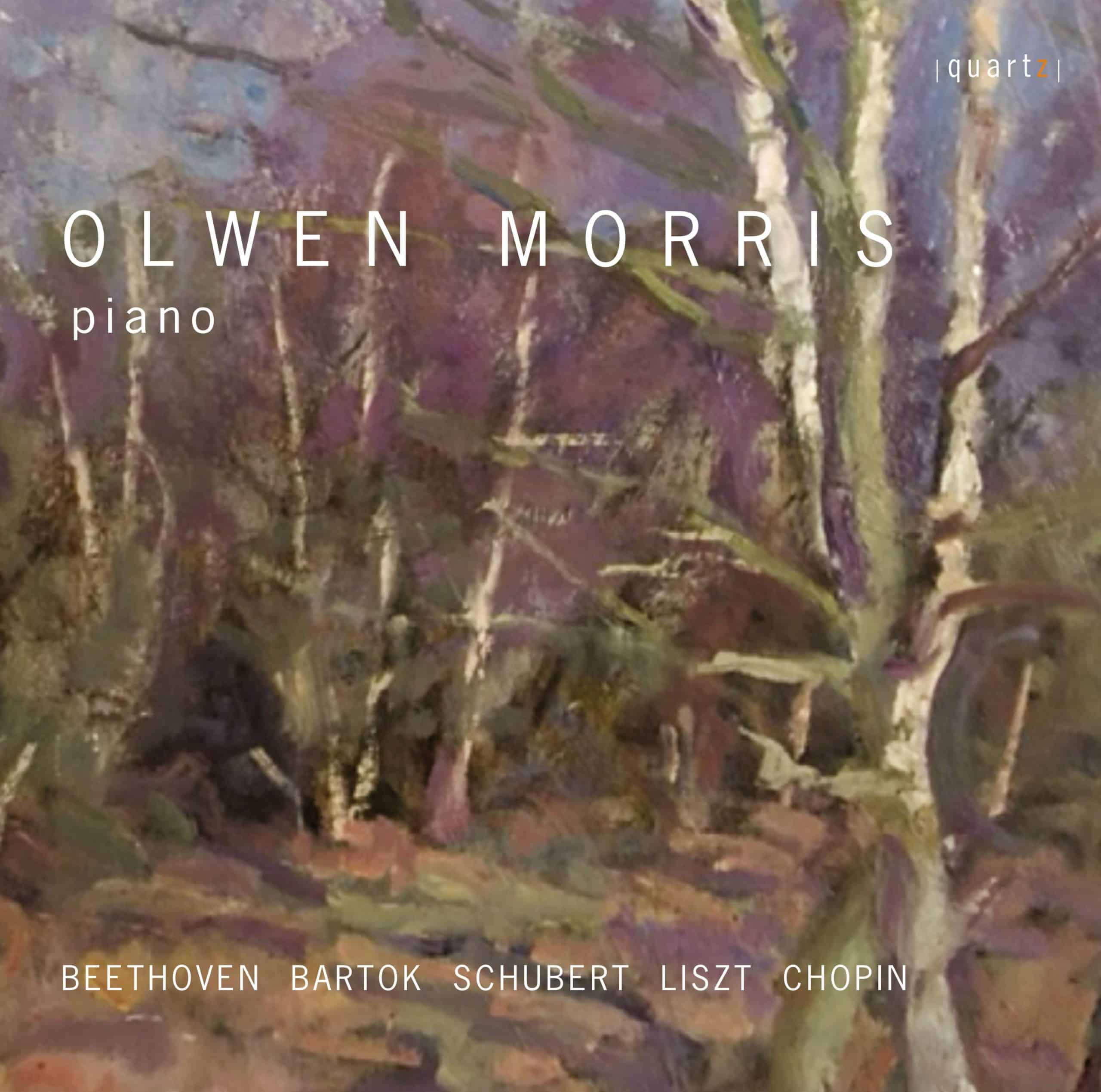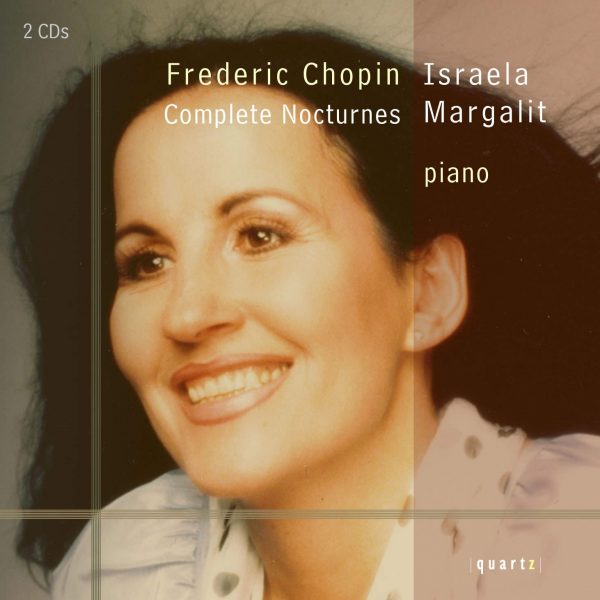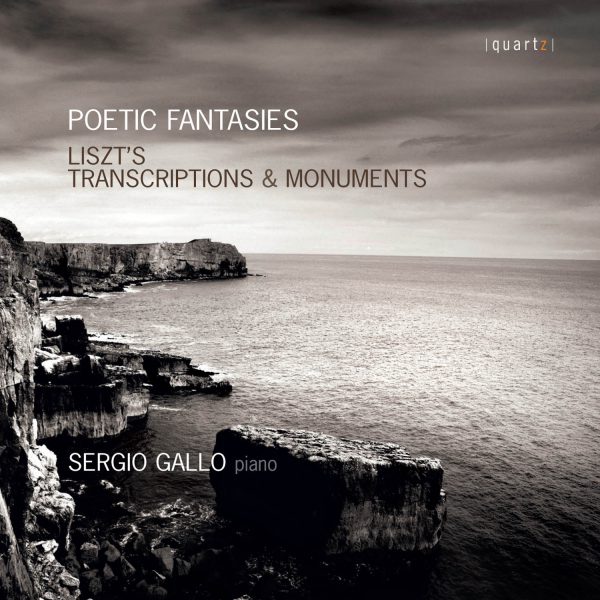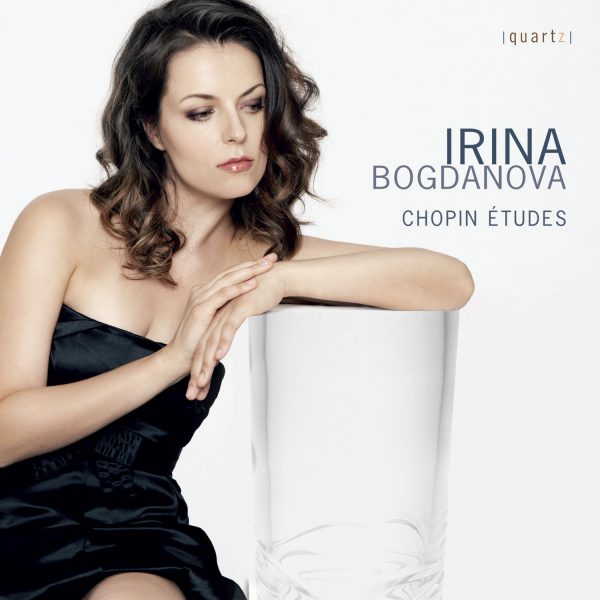Piano Works
£7.99 – £16.99
This is the second recording for Quartz from Olwen Morris, offering a cross-section of works from the Classical period through the early Contemporary. Olwen Morris grew up in war-time rural Wales, where she was first taught by Josef Gruenbaum, a musician and lawyer from Stuttgart, who with his family had fled Nazi Germany. Olwen made extraordinary progress and enrolled at 14 as the youngest student at Cardiff College of Music, (later becoming the Royal Welsh College of Music and Drama). She soon made her first early live broadcasts, including a concerto with the BBC Welsh Orchestra, and debut concerts in Cardiff’s City Hall and Reardon Smith Theatre. Teaching, directing church music, organ improvisation, and chamber music have all played parts throughout a lifetime in music, but solo playing continues to remain the vital center of it all. Her performances of the Viennese classics are remarkable for their insight and depth, and her playing of French music for sensitivity to sensual sound, also reflecting her long close association with northern France, where her artist husband, David Morris painted.
About This Recording
BEETHOVEN
Sonata 17 in D minor Op.31 No.2
Sonata in D minor Op.31 No.2 was written 1801–02 when Beethoven was 31, the seventeenth of Beethoven’s 32 piano sonatas. Its suggestive title ‘Tempest’ was not given or ever used by Beethoven, but it does reflect the tempestuous mood, especially of the first movement. The opening phrases seem to be asking questions, and it is only after 20 bars that the home key D minor is asserted in dramatic style. Thereafter, the movement drives forward, only twice interrupted by the Largo phrases and recitative bars (143 and 158), in Beethoven’s own words: “Like a voice from a tomb vault”.
The second movement is an outpouring of lyrical beauty, superbly balanced – perfect piano writing.
The third movement is unrelenting and unceasing in its circular moto perpetuo style.
Although there are key struggles and unexpected sforzandos later, it finds no way out. After a dramatic chromatic descent it ends simply as it had begun.
BARTÓK
Suite Op.14 (1916)
- i Allegretto
- ii Scherzo
- iii Allegro molto
- iv Sostenuto
Between the two sonatas, Bartók’s Suite (1914) of four short movements offers the liveliness of rhythmic and harmonic invention characteristic of the first decades of the twentieth century, while retaining its Hungarian roots. The fourth movement has been referred to typically as Bartók’s ‘Night Music’
SCHUBERT
Sonata in B flat major D
This long and amazing sonata was written in 1828, the year after Beethoven’s death, and the year Schubert died – aged 31.
1827–28 were traumatic years in which Schubert wrote some of his greatest works, including the last three piano sonatas, the song cycles Winterreise and Schwanengesang, and the String Quintet – his last chamber composition. During this time his health was deteriorating rapidly from syphilis, and its mercury poisoning ‘cure’ and finally typhoid. His circle of friends supported him. He died at this brother’s home.
It is perhaps inevitable to connect premonition of death with this B-flat Sonata; awareness of tragedy, sadness, death are acknowledged aspects of most writers, artists, composers works – alternating with love, hope, life and the recognition of all that humans experience: Schubert’s many Dances reflect his love of life and fun. The short Grazen Galop D.925 names Graz which he revisited in summer 1827 (The famous song Erl Konig which was written age 18 and first performed at Graz.)
The four movements are cast in classical forms. Schubert’s unparalleled qualities as a song writer are evident from the Sonata’s opening bars; only an ominous bass trill disturbs the calmness of this theme (similarly a feature of the G flat Impromptu). The development of musical ideas enables the movement to flow forward with much variety of expression. It ends with the modified opening theme – again with its trill.
Schubert chose a somewhat unusual key – C-sharp minor – for the poignant Adagio, but with rays of sunshine in the central A major section.
The Scherzo conveys that lightness found in the Dances, which conclude the second disc, but the B-flat minor Trio is darker with its unexpected fzps resonating like the cello’s pizzicato accompaniment from the Quintet.
A single octave on G announces the theme of the fourth movement. This is always repeated but the final three ‘clarion’ calls at the end, drop each time by a semitone before the brief Presto Coda.
LISZT
i Legend No.2, St François de Paule marchant sur les flots (1863)
ii Transcendental Étude No.12, “Chasse-neige”
As a solo instrument, the piano continued to be developed throughout the nineteenth century. Liszt was an extraordinary virtuoso pianist, and he exploited various piano techniques widely – chromatic runs, tremolos, both pedals, chords – all are effectively used in both these pieces.
They heighten climaxes and suggest the forces of nature – stormy waves and determined effort in St Francis, or the blizzard through which a heavy snow plough (Chasse Neige) must travel.
The legendary story of St François de Paule relates his miraculous crossing having been refused passage by the boatman.
Debussy
Preludes (1910) Book 1 Nos. 1, 6, 7, 10
Descriptive titles continued to be popular but in different ways. Debussy’s Preludes of 1910 reflect the Impressionist movement in Art. His use of the whole-tone scale brings a new imaginative quality of sound to his music. The title of each Prelude was deliberately placed at the end.
ELGAR
i In Smyrna ii Skizze
Elgar’s two short pieces written in 1905 and 1903 are improvisatory in style and in diatonic harmony.
Elgar was on a Mediterranean cruise when he wrote in his diary of his arrival in and delight for Smyrna: ‘My first touch with Asia, and I was quite overcome.’ Edwardian England was far away, but some of Elgar’s nostalgia is here in this interesting piece.
Skizze (sketch – short piece) written around 1901 was dedicated to ‘My dear friend Professor Julius Buths’ Dusseldorf.
Chopin
Fantasia Op.49
Fantaisie-Impromptu in C-sharp minor, Op.66 Barcarolle Op.60
These three pieces are all late works. Chopin’s pieces always ‘speak for themselves’: Waltzes, Nocturnes, Impromptus, Études, have little need of more explanation.
The Fantasia (Op.49) is a passionate work reflecting the troubles and revolutionary times Chopin was living through.
Fantaisie-Impromptu alternates between the mood of ‘agitato‘ and the lyricism of the middle section, showing Chopin’s piano writing in all its fluency and freedom of expression.
The Barcarolle has been described as Chopin’s finest lyrical work.
From its opening rhythmic movement, we are taken on a journey through whatever waters we may personally have ever enjoyed ourselves – but with Chopin choosing the way!
SCHUBERT
Dances
This is a random collection, taken from Schubert’s many short dances, (often only two lines long), waltzes, landlers, written for piano, at various times and over much of his life.
They invite us to share Schubert’s love of dancing, its exuberance, carefreeness. sentiment – and even sadness.
Olwen Morris
Track Listing
- Sonata in D minor Op.31, No.2: I Largo Allegretto
- Sonata in D minor Op.31, No.2: II Adagio
- Sonata in D minor Op.31, No.2: III Allegretto
- Suite Op.14: No.1 Allegretto
- Suite Op.14: No.2 Scherzo
- Suite Op.14: No.3 Allegro molto
- Suite Op.14: No.4 Sostenuto
- Sonata in B Flat, D.960: I Molto Moderato
- Sonata in B Flat, D.960: II Andante sostenuto
- Sonata in B Flat, D.960: III Scherzo
- Sonata in B Flat, D.960: IV Allegro ma non troppo
- Legend, No.2, St François de Paule marchant sur les flots
- Transcendental Étude No.12, “Chasse-neige”
- Prelude I Lente et grave
- Prelude VI Triste et lente
- Prelude VII Anime et tumltueux
- Prelude X Profondement calme
- In Smyrna
- Skizze
- Fantasie Op.49
- Fantasie-Impromptu in C-sharp minor Op.66
- Barcarolle Op.60
- Valses Nobles Op.77 No.1
- Landler, Op.18 No.1
- Landler, Op.18 No.2
- Landler, Op.18 No.3
- Landler, Op.18 No.7
- Walzer, Op.9 No.1
- Walzer, Op.9 No.2
- Walzer, Op.9 No.3
- Walzer, Op.9 No.6
- Walzer, Op.9 No.12
- Walzer, Op.9 No.13
LUDWIG VAN BEETHOVEN (1770–1827)
BÉLA BARTÓK (1881–1945)
FRANZ SCHUBERT (1797–1828)
FRANZ LISZT (1811–1886)
CLAUDE DEBUSSY (1862–1918)
EDWARD ELGAR (1857–1934)
FRÉDÉRIC CHOPIN (1810–1849)
FRANZ SCHUBERT




